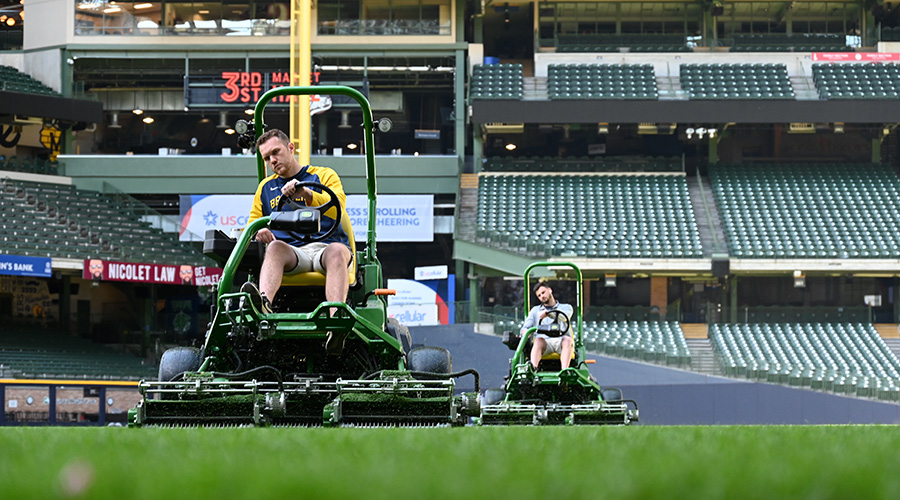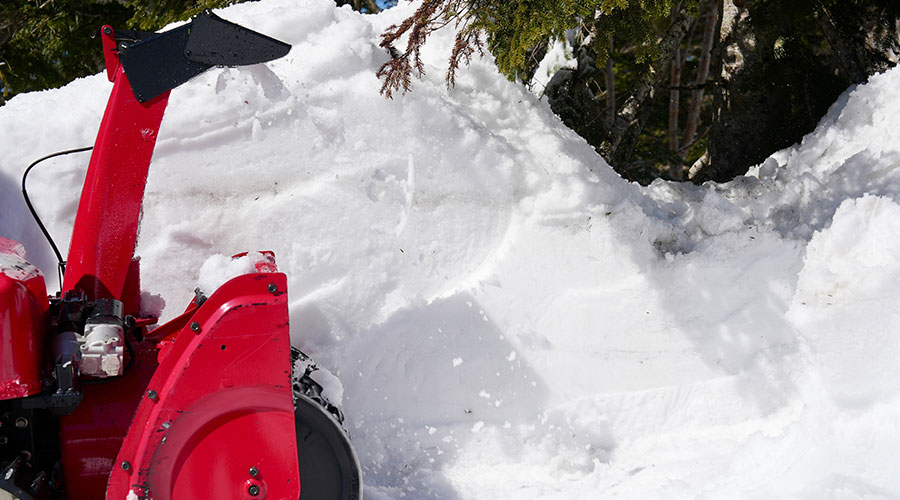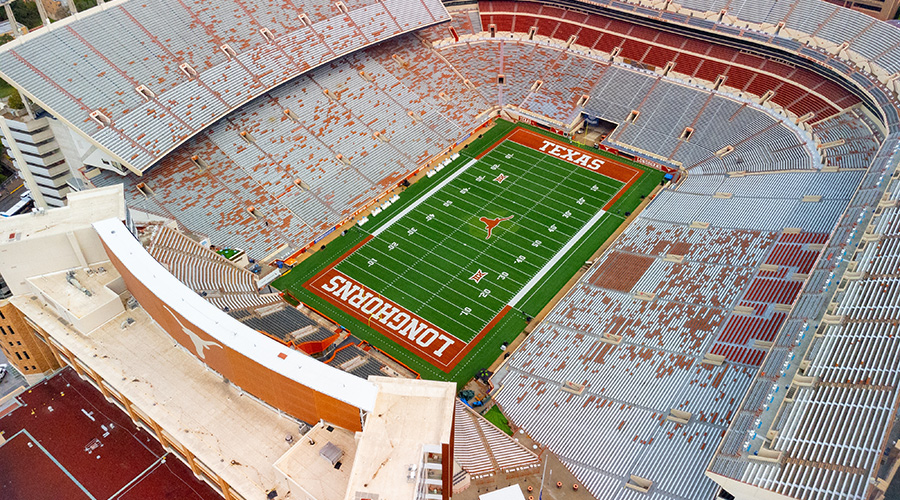Pest Control: Answers for the Birds
Strategies and tactics designed to help managers prevent diseases and damage associated with too many birds
Bird flu and West Nile virus are two frightening and newsworthy diseases associated with birds. These diseases are highly publicized and should not to be taken lightly. But for grounds managers, many types of birds present daily challenges that often don’t make headlines. House sparrows, starlings, pigeons, blackbirds, woodpeckers, and Canada geese can be common pests.
Birds present several problems. First, they carry diseases and harbor insects and mites that spread diseases. Second, they can make a huge mess that not only spreads disease but causes damage to pavement, buildings and vehicles. Finally, the mess created by large numbers of birds also is extremely unsightly. In the case of Canada geese, they also can be very destructive to landscapes and lawns.
Problems with Pigeons
Pigeons are a major problem on the campus of Arizona State University.
“They perch and nest on ledges and window sills and in the alcoves of the buildings,” says Mike Schantel, assistant supervisor for the university’s arboretum. “We do not worry so much about the birds in the trees. Those roosting in the buildings are the problem. Most of our complaints are about droppings accumulating at entryways, on walks, around benches and on cars.”
Pigeons can carry a range of diseases, including toxoplasmosis, encephalitis, Salmonella and typhimurium. Histoplasmosis and cryptococcosis are serious, systemic, fungal diseases.
Histoplasmosis is a respiratory disease that humans can contract by disturbing accumulations of bird droppings. The infection can result in flu-like symptoms, but if left untreated it can cause blindness, damage lungs and even result in death.
When working near bird droppings, Schantel recommends that employees wear a face mask or self-contained breathing apparatus, as well as protective clothing similar to that worn when working with pesticides.
Bird droppings also can deface and accelerate the deterioration of buildings, outdoor furniture, pavement and automobiles. Bird nests can clog drain pipes and interfere with electrical services and fire escapes. To deter roosting pigeons, Arizona State University uses several humane methods.
“We began using the spikes on exposed beams and ledges,” Schantel says. “These 5-inch spikes prevent the birds from landing on the building’s flat surfaces. They are a vinyl-type material and are attached with construction adhesive.
“In some areas they have been effective, but they are not aesthetically pleasing. We do not use them in areas that are visible to the public.” The spikes must be monitored because the glue eventually dries, allowing the spikes to loosen.
In highly visible areas, Schantel uses a similar technique to prevent birds from landing. Instead of spikes, he places containers with succulents and cactus with long needles on ledges and in alcoves.
“The containers must be well secured with glue and screws and must be watertight,” Schantel says. The highest ledges with these planted pots are on the third story. The university uses another mechanical method for bird control.
“We have draped a translucent, synthetic mesh along the entire face of an eight-story building,” Schantel says. The mesh keeps birds from ledges, window sills, nooks and crannies where they like to congregate. And it does not detract too much.” The mesh generally lasts three years in the Arizona climate, he says. This method is labor intensive and expensive, so the university hires a contractor to install it.
In two areas of campus, the university’s grounds crew has set up speaker systems that broadcast predator bird calls randomly throughout the day. Schantel says this method has been least effective.
In February, the university adopted yet another method — so far very successful — to reduce the pigeon population.
“We have hired a contractor to build and set custom pigeon traps,” he says. “In certain problem areas, the traps are set on the roofs and ledges. Within the first few months, we trapped many birds. When the bird population is reduced and fewer birds are trapped in an area, the traps are relocated.” The traps are customized to catch pigeons.
“Occasionally, a dove will get caught but they can escape as they are small enough to fit through the opening,” Schantel says. “The traps are baited with corn, milo (sorghum) and water and checked twice each week. The birds are never starved or mistreated.”
If a bird is injured or sick, the contractor will tend to its needs. If a trapped bird has a tag, it will be released to the owner. The traps generally are set on roofs and in alcoves where they are not visible, he says.
“Most of our buildings have roof access,” he says. “No special equipment, like scaffolding or bucket trucks, is used in the trapping process. We will spend a little under $5,000 for the trapping this year, and I can tell you, we have spent many times that on labor and supplies for cleanup of pigeon droppings in the past.
A Gander at Geese
Once in danger of extinction in North America, the Canada goose population is increasing dramatically nationwide, in part because of laws protecting them and a lack of natural predators. Urban landscapes are especially attractive.
Canada geese prefer large, open spaces with mowed, fertilized lawns surrounding a lake or detention pond. This setting is typical of today’s corporate or university campus, housing development or golf course.
The Canada goose can be very destructive and messy. It is estimated that geese can eat up to 5 pounds of turf per day and produce up to 1.5 pounds of droppings. Large, continually grazing populations also can compact turf areas and compromise water supplies.
Successful geese management often includes the use of flowers, says Jack Pizzo, founder of Pizzo & Associates Ltd. Ecological Restoration in Leland, Ill.
A good first step is restoring the native perennial flowers around the ponds, as well as in lawns areas that don’t need to be turf. Canada geese are still wild animals with deep instinctual behaviors, and they perceive areas with taller native wildflowers as unsafe environments where predators might lurk.
“When we establish native plant material within our landscapes, geese avoid these areas and opt to populate landscapes dominated by turf grass,” Pizzo says. Native perennial wildflowers and grasses have deep root systems that can stabilize eroding shorelines.
When these plantings mature, the reduced population of Geese combined with the deep-rooted plants will result in improved water quality. Over the long term, wildflowers are a permanent solution because they drop seeds every year to fill in any bare soil.
Cost is always a factor, Pizzo says. The cost to establish wildflowers is usually lower than the alternative. Where barrier plantings are not an option, Pizzo offers these tactics to reduce geese populations.
-
Reduce food sources.
-
Decrease the size of lawn areas surrounding water.
-
Curtail fertilizer use. Geese prefer lush, succulent, tender grass.
-
Reduce or eliminate mowing around the edges of water. In taller grass, geese cannot easily find new, delectable shoots. Taller grass also acts as a barrier to block their line of sight from the water, their main mode of protection from predators.
Placing large, rugged boulders about 2 feet in diameter around the water also might discourage geese from walking in and out of the water.
Chemical repellents that make grass taste bad can work, but they might be cost-prohibitive. They also require frequent application because they wash off with rain or irrigation and are removed with mowing.
When using a repellent, workers must read and follow all label directions. Some repellents are labeled for use on grass, while others are designed for use in water.
Finally, dogs such as border collies are becoming a popular method of keeping geese out of an area, but this practice might not be acceptable in all areas. Also, trained dogs can be expensive and require plenty of exercise. Specialty companies can provide and supervise dogs for geese patrol.
Before undertaking bird-control measures, managers must check with local and state departments of agriculture or wildlife. Laws regulating bird control and bird protection vary by municipality and by state, and federal regulations also apply. Caution is the best advice. Actions that might be legal in one state might not be in another.
Clearing the Way for Birds
In many urban settings, deaths of migrating bird are on the rise. While this problem is not related to disease transmission, unsightly messes or property destruction, it affects facilities, and it is a real concern for environmentalists.
Between 100 million and 1 billion migrating birds are killed annually in the United States, says Dr. Daniel Klem Jr., a professor of ornithology and conservation biology at Muhlenberg College in Allentown, Pa. During migration, some birds flying at night are drawn to the lights of tall buildings. They can become disoriented and are unable to fly above or around the lights. In the morning, they can come to ground level instead of continuing.
As a result, some die of starvation or exhaustion, while others become prey for other birds, rats, dogs or cats.
Birds also can mistake large windows or glass doors for open spaces. They also can be attracted to trees inside building atriums, believing they are places to rest or escape a predator. Bird collisions with glass are frequently fatal.
The Chicago Bird Collision Monitors — www.birdmonitors.net — recommends a number of possible solutions for these problems.
Managers can turn off or dim lights at night. On new buildings, they can discourage the use of reflective or patterned glass. For existing windows, they can push for the installation of products that look like expensive etched or frosted glass.
One-way films that allow building occupants to see out windows tend to look solid to birds. Keeping interior trees and plants away from windows also can minimize problems.
Finally, applying decals, streamers or other decorations to break up dangerous reflections also might help, but to do so, they must cover the majority of the window.
— Cathy Walker
|
Related Topics:











